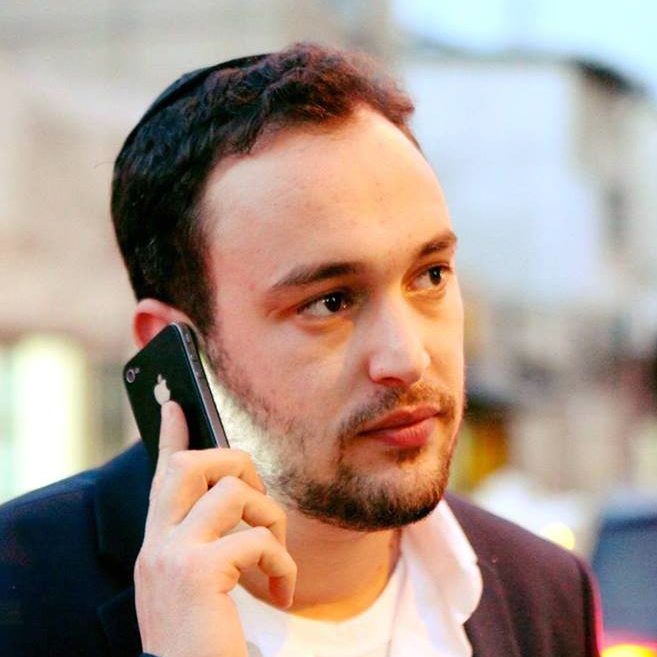On a Silver Platter

When Yitzchak Chaskelson creates a Kiddush cup, he knows he’ll never be able to replicate it. That’s because each of his silver items is handmade, chiseled and embossed from scratch, sometimes taking months, or even years, to complete.

Photos Ezra Landau
When he was little, Pesach was his favorite holiday. Little Itche would help clean and shop, and after all the hard work there was nothing more magical than watching his parents take down the Pesach dishes. Sitting at the Seder next to his grandfather, he’d listen enraptured as the elderly Holocaust survivor shared stories of Pesach in the town of Gura Kalwaria (Ger). There were sweet echoes of the songs sung in the legendary capella of the Imrei Emes, and moving tales of miracles in the Nazi death camps.
The year Itche Chaskelson was ten, Pesach became the date marking a personal geulah as well. He had just gotten over a bout of meningitis, and when he was finally released from the hospital, he discovered that he couldn’t fully control the muscles in his right hand. For Itche, this was devastating — for although he was just a little boy, he’d already shown a marked talent for drawing.
Seeing how miserable he was, a few days before Pesach his father took him to the Lev Simchah of Ger, hoping that the Rebbe could offer some encouragement to the poor child.
“Don’t worry, it’s nothing. Nothing. It will pass,” the Rebbe said as he held the anxious boy’s hand and looked compassionately into his eyes. True to the Rebbe’s word — in contravention to medical assumptions — Itche was back to his drawing pad right after Pesach.
As he expertly engraves a silver leaf, Yitzchak Chaskelson says he owes his unusual profession to that long-ago brachah.
Even I Can’t Copy It
Yitzchak Chaskelson’s silver creations are breathtaking in their artistry and detail. They are also unique. From his nondescript workshop in Ashdod, 46-year-old Chaskelson lets his imagination soar back to the days of the shtetl, while his skilled hands recreate those picturesque scenes in silver relief on a becher, a wall mounting, or a Seder plate.
I’m holding a Kiddush cup embossed with a highly-detailed chuppah scene — I’ve never seen such an intricate design in my life. How much would such a thing cost, and which store carries it? The answer to the first question is a smile, and the answer to the second is “none.”
“It was ordered special for a wedding, and it took me three months to create,” says Reb Yitzchak. “There’s no other becher like this in the world, and because I create every piece individually by hand, I can’t create an exact replication, either.”
Oops! We could not locate your form.






